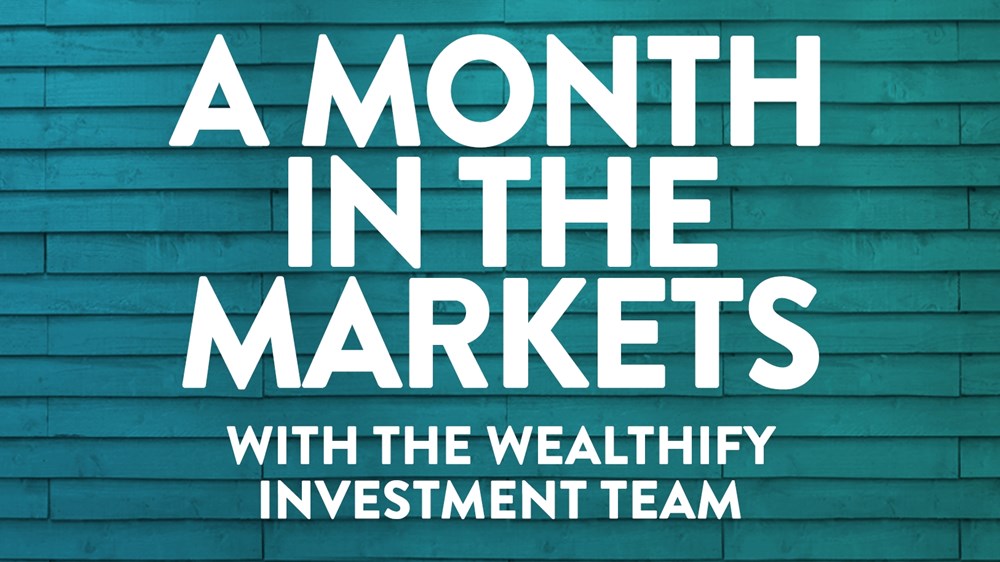With positive results throughout March, we were optimistic coming into April. However, April’s markets saw a return to the turbulence that we’ve been experiencing since the start of 2022.
We know that investing during volatile markets can be worrying, but it’s normal for markets to fluctuate. Our investment team is focused on long-term objectives and are constantly looking for opportunities in this short-term volatility. Here are some of the factors that played into April’s performance.
Last month there were increasing risks to both economic growth and inflation, which have impacted the prices of both shares and bonds alike. It’s uncommon to have so many negative forces in the markets all at once, and as a result, there has been more uncertainty across markets.
This has also come at a time when markets were adjusting to more-normal interest rates in a largely post-covid world. Now, soaring inflation across developed market economies has put pressure on central banks to keep inflation at target levels without negatively impacting their economic recovery.
The US Federal Reserve, in particular, has become increasingly focused on the threat of inflation, which they’ve tried to control with steep interest rate hikes. This move caused bond prices to fall (both in the US and globally), adding to the decreased performance of April.
The balance of tackling inflation and preserving growth can be difficult to achieve in the best of times, but it’s being made even more challenging by ongoing geopolitical challenges, including the conflict in Ukraine and the stringent lockdowns in China. These factors have seen energy prices remain high, with European gas prices up 42% year-to-date, despite cooling slightly in April. And the large-scale lockdowns across China, which saw Shanghai spend all of April in full lockdown, show that authorities are struggling to keep their firm 2-year grip on virus outbreaks. The effects of economic spillover as a result of these lockdowns is inevitable and could threaten global economic growth.
Closer to home, data released in April showed that UK inflation continued to climb in March, up from 6.2% to 7.0% year on year (yoy), and this reflected a real-term increase in the prices of goods and services. It was a similar story in the rest of Europe and the US, with Eurozone inflation hitting yet another 30-year high, increasing from 5.8% to 7.5% yoy, and the US’s inflation rate increased from 7.9% to 8.5% yoy for February.
It’s not all doom and gloom though, as the labour market continues to be a bright spot. UK unemployment declined from 3.9% to 3.8%, with the number of job vacancies hitting record levels. Data released in April (for March) also showed a slight uptick in the UK’s services sector and a slight slowdown in the manufacturing sector, leading to a marginal overall gain.
Globally, economic activity remains robust, as suggested by above-trend indicators, with pent up savings demand and strong business investment very supportive. However, the outlook has taken a knock due to geopolitical issues and government intervention. It is this uncertainty that is troubling investors.
Markets
Most share markets delivered negative returns in April in what was a sour month for share investors. The exception to this is the FTSE 100 which delivered slightly positive returns (+0.4) thanks to its relatively heavy commodity exposure.
Emerging and Developed markets came under significant pressure with the MSCI All Country World Index, falling by -8.3% over the period due to the factors we mentioned above.
Within developed markets, the US (-8.8%), Europe (-1.2%), Japan (-3.5%) and the FTSE 250(-2.1%) all ended the month in negative territory. It was a similar story in emerging markets, with Asia Pacific excl. Japan (-5.4%) and Emerging Markets (-5.7%) finished the month negatively, as concerns around the Chinese economy took their toll.
Currency
The most notable movement of currency prices in April was the weakening of sterling against the US dollar (-4.5%) which lessened the impact on investors from the high single-digit losses in US shares over the course of the month.
Sterling gained in value against most other major currencies, including the euro (+0.4%) and the Japanese yen (+2.0%). This was driven by differences in interest rate expectations across the economies.
The trajectory of interest rates is expected to be greater in the UK than in Japan and Europe, where economic growth is more of a concern than inflation. This does mean that shares held in Japan and Europe were negatively impacted by these currency movements.
Investment type performance breakdown
In Original Plans, shares (-2.6%), property (-0.8%) and bonds (-1.8%) all delivered negative returns as market conditions proved particularly challenging. The same was true in our Ethical Plans, with shares falling slightly more as they aren’t supported by commodities like oil and gas (-3.5%) and bonds (-1.8%) ending the month in the red.
Summary with Plan details
Undoing the positive performances of March, all our Investment Plans in both Original and Ethical themes performed negatively in April, as market conditions continue to be challenging.
Plans that have more bonds and property, such as our Cautious and Tentative models, had better performance than those Plans with more shares, such as our Ambitious and Adventurous Plans.
Our Investment Team continues to actively monitor the financial markets and their impact on your Plan, and as always, we are ready to act in your best interests to events as they unfold. This is why, in April we decided to reduce share exposure across the Plans, which helped to reduce losses last month as shares underperformed bonds.
We will continue to look for opportunities to position your investments with the goal of protecting your money and achieving your long-term objectives.
Please remember the value of your investments can go down as well as up, and you could get back less than invested. Past performance is not a reliable indicator of future results.



